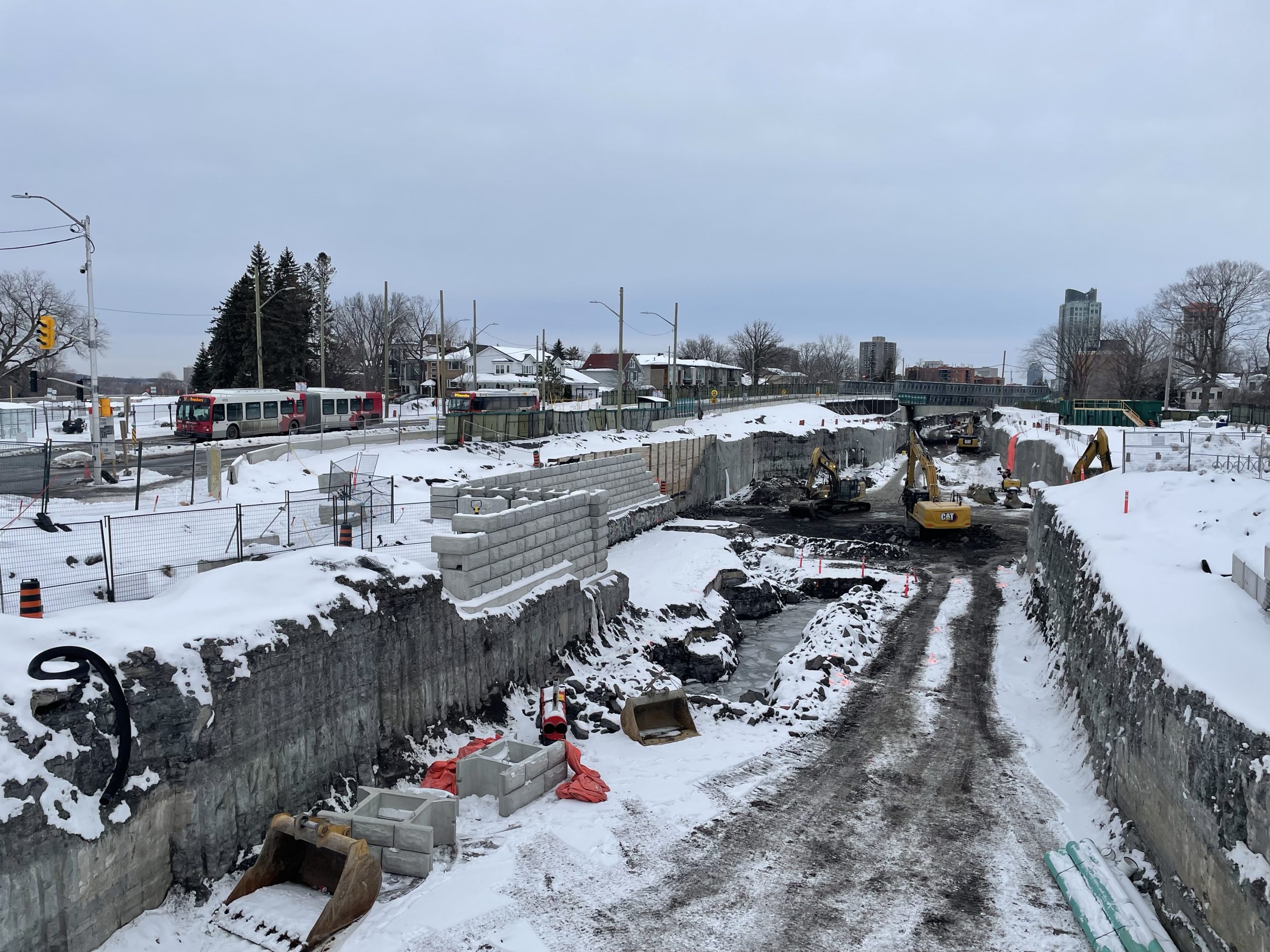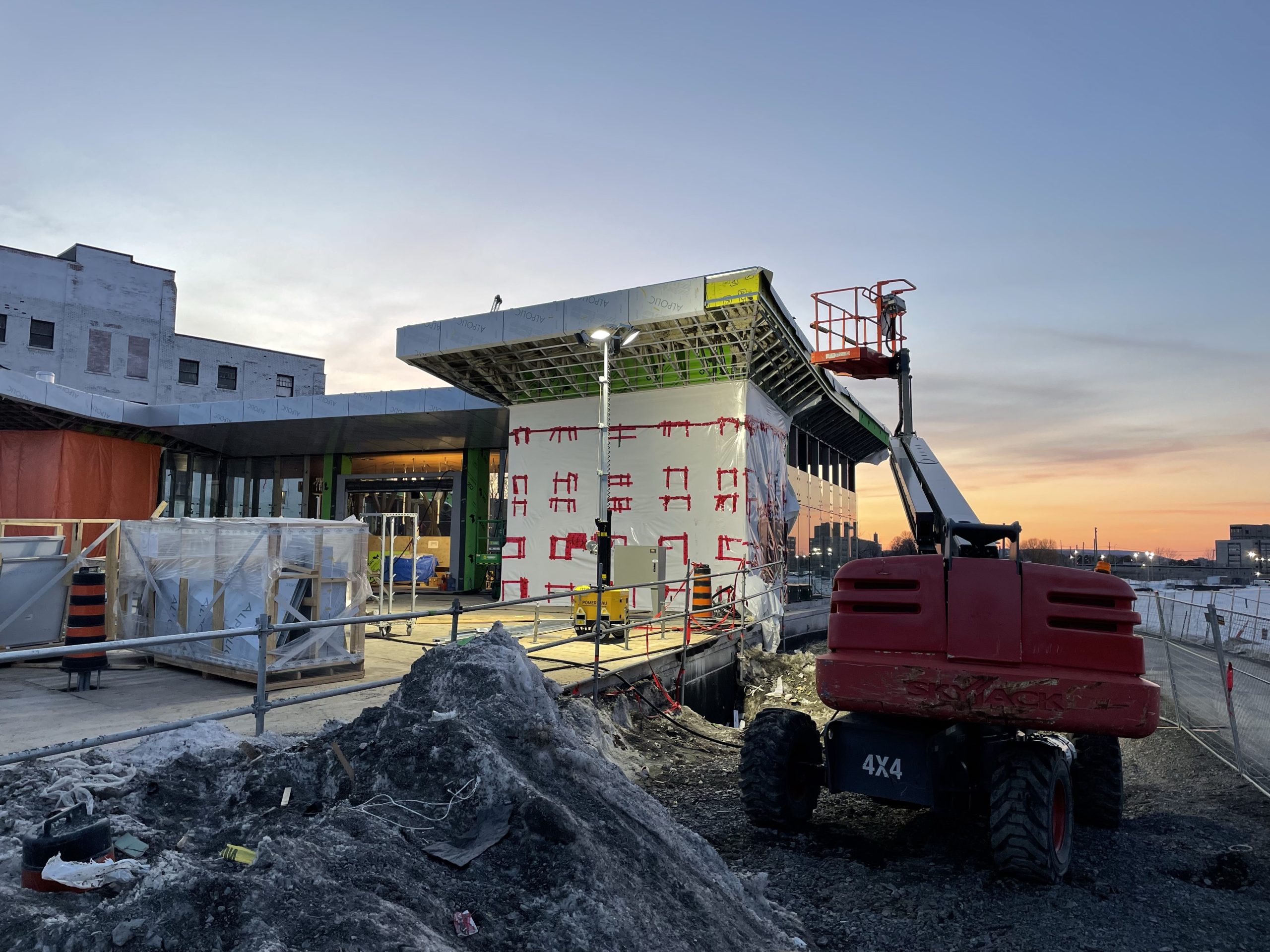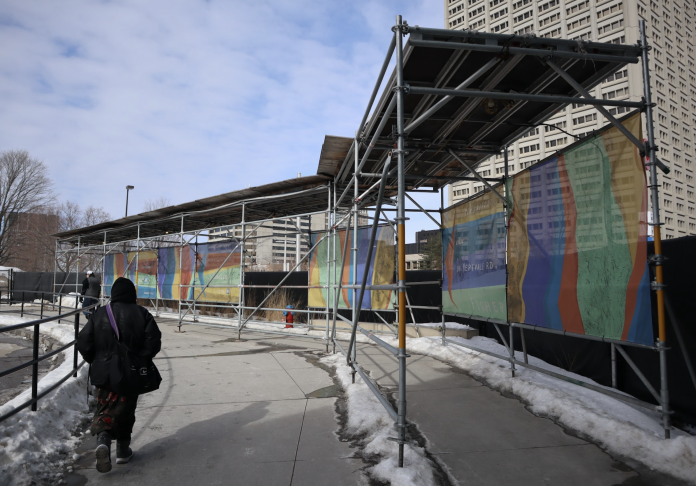By Charlie Senack
Construction scaffolding which has been keeping transit riders dry at Tunney’s Pasture station could be coming down as a cost-cutting measure.
The overhangs which were erected shortly after the station opened in 2019, were always expected to be temporary: Commuters complained of needing to brave the elements during the long walk from the station to bus shelters.
It’s come at a cost of $2 million for taxpayers, with another $700,000 bill expected for this year. The city is now looking for a way to save $47 million in its transit budget, and has proposed the takedown of the scaffolding.
“It’s going to come down to costs,” said Kitchissippi ward councillor Jeff Leiper. “If there is a cost effective way to temporarily protect riders who are going to platforms further away, I’d be more than happy to see that.”
Leiper said he doesn’t support a more permanent solution since the protective covering won’t be needed when Phase 2 LRT is launched.
“Much of the land where those overhangs are is borrowed from the federal government,” Leiper noted. “The station is not supposed to be as big as it is. In a few years the footprint will shrink very significantly and it will start to serve a more local catchment than it is currently.”
City staff have been asked to see if there is a cheaper way to keep commuters protected from the weather. The poles and plywood are to stay at least until the end of April.
The Kitchissippi Times asked transit riders at Tunney’s Pasture station what their views were over the city’s decision.
“I think they were great not just for keeping you out of the weather, but providing an easy track to follow getting from A to B,” said Chris Blackman who wasn’t aware of their potential removal.
“I didn’t know they were planning to remove the scaffolding,” echoed K.C. McKenna who travels through Tunney’s five times a week. “Why are they doing that? I always thought they were a bit of an eyesore, but they were for a purpose as they can provide shelter during rain and snow and they act as a sound barrier from the buses.”

LRT Phase 2 construction delayed again
It will now be sometime in 2026 before phase 2 LRT is rolling through Kitchissippi.
A memo sent to the mayor and city councillors on March 13, said the western extension of the Confederation line is expected to be completed by May 25, 2025, 17 months later than initially planned.
The eastern section has a nine-week delay with a proposed completion date of January 29, 2025.
The delays are caused by labour and supply chain shortages, cited city officials, which are hobbling construction across Ottawa.
Kitchissippi ward councillor Leiper said the delays are expected and the news is no surprise. He said the idea is to ensure construction isn’t rushed like it was for Phase 1.
An extended timeline means those who live near the construction have to put up with disruption a while longer. Leiper said he believes the City and LRT contractors have done all they could to mitigate the impact.
Rock breaking, which is the loudest and most disruptive part of the construction, is “almost over,” he said. “I’ve disallowed that (rock breaking) work in the Kichi Sibi station area overnight after 10 p.m. After a couple months they will start laying the tracks and that will be less disruptive.”
The Trillium line, which runs next to Kitchissippi ward, also faces delays. A best-case officials say is August or September 2023. That depends on completion of trackwork, signal testing; completion of systemwide commissioning; regulatory approvals; and crew training.
Phase 2 of the Confederation line will take the trains from Tunney’s Pasture Station to Baseline and Moodie in the west. In the east, the tracks will run from Blair Station to Trim Road in Orleans.
The soon to be reopened Trillium Line will run from Limebank Road and the airport in the south to Bayview station in Kitchissippi. It will serve as a connection point for both lines and accommodate Carleton University students.
With files by Arielle Hughes

